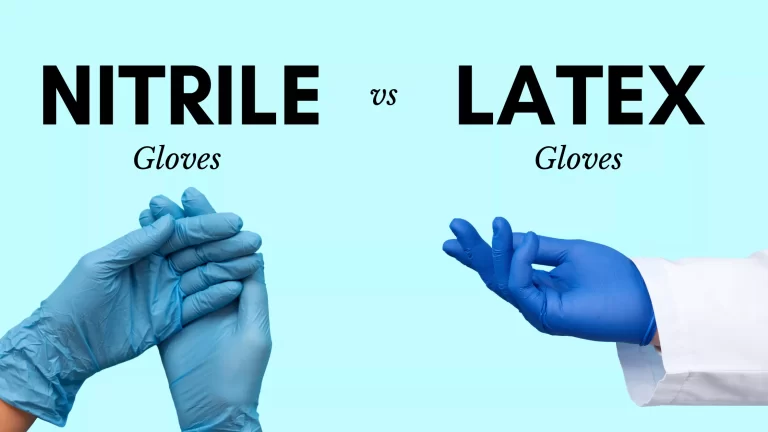Nitrile Gloves
Composition and Features
Nitrile gloves are made from synthetic rubber, specifically acrylonitrile-butadiene rubber. This composition makes nitrile gloves highly resistant to a wide range of chemicals and punctures. They are an excellent alternative for individuals with latex allergies, as they do not contain natural rubber proteins.
Advantages of Nitrile Gloves
- Allergy-Free: Nitrile gloves are latex-free, making them suitable for users who are allergic to latex.
- Chemical Resistance: Nitrile provides superior resistance to chemicals, oils, and solvents, making these gloves ideal for handling hazardous materials.
- Durability: Nitrile gloves are known for their high puncture resistance, which enhances their durability and longevity in rigorous environments.
Disadvantages of Nitrile Gloves
- Cost: Nitrile gloves tend to be more expensive than latex gloves due to their synthetic nature and superior protective properties.
- Less Elasticity: While nitrile gloves are strong and durable, they lack the elasticity and comfort that latex gloves offer.
Black Nitrile Gloves
Black nitrile gloves are particularly popular in industries such as automotive, tattooing, and food service. The black color provides a professional appearance and helps conceal stains and inks, making them ideal for situations where a clean and tidy appearance is essential. Additionally, black nitrile gloves offer the same benefits of chemical resistance and durability as standard nitrile gloves.
Latex Gloves
Composition and Features
Latex gloves are made from natural rubber latex, a biodegradable material derived from the sap of rubber trees. These gloves have been widely used in the medical field for many years due to their superior fit and tactile sensitivity.
Advantages of Latex Gloves
- Comfort and Fit: Latex gloves are highly elastic and provide a snug fit, offering excellent comfort and dexterity. This makes them ideal for tasks requiring precision.
- Tactile Sensitivity: The thin material of latex gloves allows for superior tactile sensitivity, making them suitable for delicate procedures.
Disadvantages of Latex Gloves
- Allergic Reactions: The primary drawback of latex gloves is the potential to cause allergic reactions. Individuals with latex allergies can experience symptoms ranging from skin irritation to severe anaphylaxis.
- Chemical Sensitivity: Latex gloves are less resistant to certain chemicals and oils, which can degrade the material and reduce their protective capabilities.
Latex Exam Gloves
Latex exam gloves are commonly used in medical examinations and procedures due to their high level of comfort and tactile sensitivity. These gloves are preferred in settings where a precise touch is required, such as during surgeries or when handling sensitive instruments. Despite their benefits, the risk of latex allergies necessitates the use of alternative materials like nitrile in many healthcare facilities.
Choosing the Right Gloves
When selecting between nitrile and latex gloves, consider the specific needs of the task and the potential for allergic reactions. For environments requiring robust chemical resistance and puncture protection, nitrile gloves, including black nitrile gloves, are the best choice. For tasks demanding high tactile sensitivity and comfort, latex exam gloves are preferred, provided that latex allergies are not a concern.
Conclusion
Both nitrile and latex gloves have their unique advantages and are suited to different applications in the medical field and beyond. Nitrile gloves offer superior chemical resistance and durability, making them a versatile option for various industries. Latex gloves, with their exceptional fit and sensitivity, remain a staple in medical examinations and procedures. Ultimately, the choice between nitrile and latex gloves depends on the specific requirements of the task and the user’s sensitivity to latex. By understanding the properties and uses of each type of glove, healthcare professionals and other users can make informed decisions to ensure safety and efficiency in their work.






